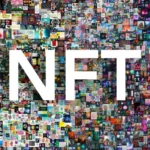Blockchain is a revolutionary technology that’s transforming industries worldwide. At its core, it’s a decentralized digital ledger that securely records transactions across multiple computers.
This ensures transparency, immutability, and eliminates the need for intermediaries. While often associated with cryptocurrencies like Bitcoin, blockchain’s applications extend far beyond digital currencies.
From supply chain management to healthcare, it offers a secure and transparent way to track information.
In this article, we’ll break down the key concepts of blockchain, explain how it works, and explore its real-world uses in simple, easy-to-understand terms.
By the end, you’ll have a solid grasp of this game-changing technology and its potential impact on various industries.
What Is Blockchain?
At its core, blockchain is a type of database. But it’s unlike traditional databases, which store information in tables. Instead, a blockchain stores data in blocks that are chained together in a sequential and secure manner.
Key Characteristics of Blockchain:
- Decentralized: Not controlled by a single entity.
- Immutable: Data can’t be changed once it’s recorded.
- Transparent: Everyone on the network can verify transactions.
Understanding Blockchain with a Simple Analogy
Let’s use a simple analogy to understand it better.
The Notebook Analogy:
Imagine a public notebook placed in a town square. Everyone in the town can write in it, and once something is written, no one can erase or change it.
Each page represents a block, and every time a page is full, a new page (block) is added, linked to the previous one.
This notebook is open to all, but only verified entries (transactions) get recorded. That’s blockchain in action.
How Does Blockchain Work?
Step-by-Step Breakdown:
- A transaction is requested – e.g., Alice sends 1 Bitcoin to Bob.
- The transaction is broadcast to a network of computers (nodes).
- The network validates the transaction using consensus algorithms.
- The validated transaction is recorded in a new block.
- The new block is added to the chain in chronological order.
- The transaction is complete and visible to all participants.
The Main Components of Blockchain
| Component | Description |
|---|---|
| Block | A container that holds a batch of transactions. |
| Chain | The chronological linkage of blocks using cryptography. |
| Node | A computer connected to the blockchain network. |
| Hash | A unique identifier for each block, created using cryptographic algorithms. |
| Consensus Protocol | Rules used by network participants to agree on valid transactions. |
Types of Blockchains

There are three main types of blockchains:
Public Blockchain
- Open to anyone.
- Fully decentralized.
- Examples: Bitcoin, Ethereum.
Private Blockchain
- Restricted access.
- Controlled by one organization.
- Used in enterprise settings.
Consortium Blockchain
- Semi-decentralized.
- Controlled by a group of organizations.
- Ideal for industry collaborations.
ALSO READ: How to Gain the AI Edge in Ecommerce: Why It Matters and How to Achieve It
Why Is Blockchain Important?
Blockchain is more than just a buzzword. It offers real-world solutions to longstanding issues:
| Problem Solved | How Blockchain Helps |
|---|---|
| Data Tampering | Immutable records prevent alteration. |
| Fraud | Transparent transactions reduce fraud risks. |
| Intermediaries | Peer-to-peer model eliminates the need for middlemen. |
| Slow Processes | Smart contracts automate and speed up execution. |
Real-Life Examples of Blockchain in Action
Cryptocurrencies
- Bitcoin was the first use case for blockchain.
- Transactions are peer-to-peer and don’t need banks.
Supply Chain Management
- Blockchain can track the origin and journey of goods.
- Ensures transparency and authenticity.
Voting Systems
- Blockchain can create tamper-proof digital voting platforms.
- Increases trust in democratic processes.
Healthcare
- Patient records can be stored securely.
- Ensures privacy and authorized access.
Blockchain vs Traditional Databases
| Feature | Blockchain | Traditional Database |
|---|---|---|
| Control | Decentralized | Centralized |
| Transparency | Publicly verifiable | Restricted access |
| Immutability | Can’t be altered | Can be edited or deleted |
| Security | Highly secure through cryptography | Depends on firewall and access control |
What Is a Smart Contract?
A smart contract is a self-executing contract with the terms written in code. It runs on the blockchain and automatically performs actions when predefined conditions are met.
Example: Imagine renting a car online. A smart contract could release the digital key only when payment is made—no need for an agent.
What Is Mining in Blockchain?

Blockchain Mining:
Mining is the process of verifying and adding transactions to the blockchain. It involves solving complex mathematical puzzles—a process called proof of work (PoW).
- Miners use powerful computers.
- The first to solve the puzzle adds the block.
- They are rewarded with cryptocurrency (e.g., Bitcoin).
ALSO READ: The Ultimate Guide to Streaming Sports with IPTV: How Norsk IPTV Changes the Game
Popular Blockchain Platforms
| Platform | Description |
|---|---|
| Bitcoin | The original and most widely known blockchain network. |
| Ethereum | Supports smart contracts and decentralized apps (dApps). |
| Solana | Known for high-speed and low-cost transactions. |
| Hyperledger | Open-source enterprise-grade blockchain framework. |
Key Terms to Know
| Term | Meaning |
|---|---|
| Ledger | A record of transactions. |
| Token | A digital asset on a blockchain. |
| DeFi | Decentralized Finance – financial tools on blockchain without banks. |
| NFT | Non-Fungible Token – unique digital items like art or music. |
| Gas Fee | Fee paid to perform transactions or run smart contracts. |
Misconceptions About Blockchain
Blockchain Is Bitcoin
No. Blockchain is the technology, and Bitcoin is just one application of it.
All Blockchain Is Public
Wrong. There are private and consortium blockchains used in business settings.
Blockchain Is Only for Tech Experts
False. Many platforms offer user-friendly interfaces and applications for non-tech users.
Benefits and Challenges of Blockchain
Benefits:
- Decentralization
- Enhanced security
- Data integrity
- Cost savings (no middlemen)
- Increased efficiency
Challenges:
- Scalability issues
- High energy usage (especially in mining)
- Regulatory uncertainty
- Complexity for new users
Industries Being Transformed by Blockchain
| Industry | Use Case Example |
|---|---|
| Finance | Peer-to-peer transactions, DeFi, cross-border payments |
| Healthcare | Secure patient data sharing, drug traceability |
| Real Estate | Smart contracts for buying/selling property |
| Logistics | Real-time tracking and inventory transparency |
| Education | Verifiable credentials and degree certificates |
The Future of Blockchain

Blockchain is evolving beyond cryptocurrency. Key future trends include:
- Integration with IoT: Smart devices verifying and recording data on blockchain.
- Sustainable Blockchains: Moving from energy-heavy PoW to greener models like Proof of Stake (PoS).
- Government Adoption: Countries exploring Central Bank Digital Currencies (CBDCs).
- Web3 Revolution: Decentralized internet powered by blockchain.
Tips to Learn Blockchain Easily
- Start with the Basics: Focus on concepts like blocks, nodes, hashing, and decentralization.
- Use Analogies: Relating concepts to everyday objects helps understanding.
- Watch Explainer Videos: Platforms like YouTube offer beginner-friendly visuals.
- Read Whitepapers: Start with Bitcoin or Ethereum to dive deeper.
- Try Hands-On Tools: Use wallets, explore dApps, and test demo blockchains.
- Take Online Courses: Platforms like Coursera, Udemy, or edX offer free and paid content.
Beginner-Friendly Blockchain Tools
| Tool | Purpose |
|---|---|
| MetaMask | Wallet for Ethereum-based applications |
| Remix IDE | Online tool to test smart contracts |
| Etherscan | Explore and verify Ethereum transactions |
| Coinbase Wallet | User-friendly wallet to store tokens |
| Trust Wallet | Mobile wallet with support for multiple chains |
ALSO READ: Understanding Transfer Learning in Newborns: How the Brain Learns Before Birth
Conclusion
Understanding blockchain doesn’t require you to be a developer or mathematician. At its heart, it’s a shared, secure record-keeping system that eliminates the need for trust by providing transparency and immutability.
Whether you’re interested in cryptocurrencies, digital contracts, or industry applications, blockchain is becoming a foundational technology.
As it continues to reshape finance, business, healthcare, and even voting systems, gaining a basic understanding today can help you stay ahead in tomorrow’s world.







